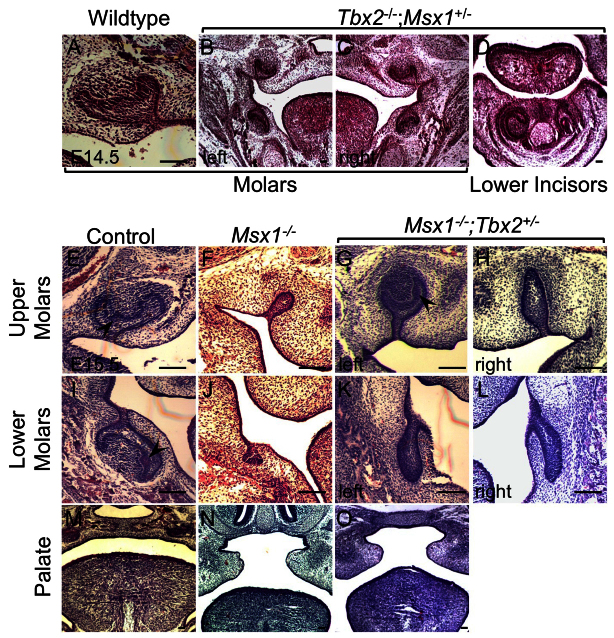Fig. 3.
Msx1-/-;Tbx2+/- compound mutants show partially rescued molars. (A-D) Coronal section of a wild-type molar at E14.5 is shown as reference (A). Tbx2-/-;Msx1+/- compound mutants at E14.5 show apparently normal molars (B,C) and incisors (D). (E-O) Msx1+/-;Tbx2+/- mice were intercrossed and the progeny analyzed at E15.5. Compared with wild-type upper (E) and lower (I) molars, which have progressed to cap stage, the Msx1-/- teeth remain arrested at bud stage (F,J). Surprisingly, the Msx1-/-;Tbx2+/- embryos showed rescue of an upper molar to cap stage (G), whereas the contralateral molar showed an enlarged bud (H). Arrowheads indicate enamel knots (E,G,I). The lower molars, by contrast, show only a grossly enlarged bud (K,L). This rescue seems to be specific to the tooth because the palate (M), which fails to develop and fuse in Msx1-/- embryos (N), is not rescued (O). Scale bars: 0.1 mm.

